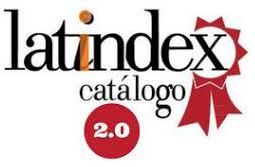La historiografía sobre la dinastía omrida (1920-2020): un pasado socio-político olvidado
Resumen
Toda la historia hebrea tradicional ha sido objeto de indagación y revisión en los últimos años, incluyendo nuevas versiones. El surgimiento del Estado en la región de Israel y Judá, a la luz de los hallazgos arqueológicos de las últimas décadas ha modificado la perspectiva sobre la historia del siglo IX a.e.c. Nuestro interés se centra en la dinastía omrida, y estamos persuadidos acerca de las razones que silenciaron sus voces. Los autores que han abordado la dinastía omrida en todos sus niveles de análisis componen un grupo reducido proveniente de distintos campos como la sociología (Weber), los estudios bíblicos (Alt, Noth, Yafé, Ojwang), la historia y antropología (Soggin, Niemann, Thompson, Pfoh) y la arqueología (Finkelstein, Franklin) El objetivo central de este trabajo es abordar esta producción historiográfica en un arco temporal de cien años (1920-2020). Para ello seleccionamos y examinamos un número de variables concretas. Ellas son: las prácticas políticas del rey Omrí y sus sucesores, la fundación de la ciudad de Samaria como centro de poder para la dinastía omrida y el papel de las construcciones de la época omrida así como los recursos humanos y materiales utilizados para ellas, la dinámica sociopolítica en la sociedad israelita y los grupos dominantes en el siglo IX a.e.c., las relaciones con otras organizaciones políticas de la región, el advenimiento de un Estado con Omrí en Israel. Así al cotejar el uso de las evidencias en cada autor, podremos comparar los aportes relevantes de cada uno y proponer nuestra interpretación integral de las evidencias bíblicas, arqueológicas y epigráficas sobre la dinastía omrida y su ruptura con el pasado hebreo tradicional.
Palabras clave
Referencias
Alt, Albrecht (1925). “Die Landnahme der Israeliten in Palästina”. Kleine Schriften, N° 1, pp. 89-125.
Alt, Albrecht (1966). “The Settlement of the Israelites in Palestine”. En Essays on Old Testament History and Religion (pp. 81-132). Oxford: Oxford University Press.
Biran, Amiran y Naveh, Joshep (1995). "The Tel Dan Inscription: a New Fragment". Israel Exploration Journal, N° 5, pp. 1-18.
Boer, Roland (1997). "National Allegory in the Hebrew Bible". Journal for the Study of the Old Testament, N° 74, pp. 95-116.
Bourdieu, Pierre (2012). Bosquejo de una teoría de la práctica. Buenos Aires: Prometeo.
Boyer, Adam y Hayoun, Maurice-Ruben (2008). La historiografia judia. México D.F.: Fondo de Cultura Económica.
Cantrell, Deborah O. (2011). The Horsemen of Israel: Horses and Chariotry in Monarchic Israel (ninth-eighth centuries BCE). Winona Lake: Eisenbrauns.
Claessen, Hans. J. M y Skalník, Peter (1978). The Early State. The Hague: Mouton.
Clarke, David (1979). Analytical Archaeology. New York: Academic Press.
Cronauer, Peter (2005). The Stories about Nabot the Jezreelite. A Source, Composition and Redaction Investigation of 1 Kings 21 and Passages in 2 Kings 9. New York/London: T&T Clark.
Davies, Philips R. (1994) “House of David Built on Sand: The sins of the Biblical Maximizers”. Biblical Archaeology Review, Vol. 20, pp. 54-55.
Davies, Philips R. (2007). The origins of Biblical Israel. (Library of Hebrew Bible/ Old Testament Studies 485). New York/London: T&T Clark.
De Vaux, Roland (1961). “Les fouilles à Tell el- Far ‘ah, rapport préliminaire sur les 7°, 8°, 9° campagnes, 1958-1960”. Revue Biblique, N° 68, pp. 557-592.
De Vaux, Roland (1965). Ancient Israel its life and Institutions. London: Longman and Todd.
De Vaux, Roland (1975). Historia Antigua de Israel. Tomo II. Asentamiento en Canaan y período de los Jueces. Madrid: Cristiandad.
Donner, Henry (1977). “The Separate States of Israel and Judah”. En Hayes, John H. y Miller, J. Maxwell (Eds.). Israelite and Judean History (pp. 381-434). Louisville: Westminster John Knox Press.
Dorsey, Daniel (1991). The Roads and Highways of Ancient Israel. Baltimore: John Hopkins University Press.
Ebeling, Jennie, Franklin, Norma y Cipin, Ian (2012). “Jezreel revealed in laser scans. A preliminary report of the 2012 survey season”. Near Eastern Archaeology, Vol. 75, N° 4, pp. 232- 238.
Edelman, Diana (1988). “Saul’s Journey Throuth Mt. Ephraim and Samuel’s Ramah” (1 Sam.9:4-5.10:2-5). Zeitschrift des Deutschen Palästina-Vereins, N° 104, pp. 253-258.
Eisenstadt, Schmuel N. (1969). The political Systems of Empires. New York: Routeledge.
Finkelstein, Israel y Silberman, Neil A. (2001). La Biblia desenterrada. Una nueva visión arqueológica del antiguo Israel y de los orígenes de sus textos sagrados. Madrid: Siglo XXI.
Finkelstein, Israel (2003). “The Rise of Jerusalem and Judah- The Missing Link”. En Vaughn, Andrew G. y Killebrew, Ann E. (Eds.). Jerusalem in Bible and Archaeology The First Temple Period (pp. 81-10). Atlanta: Society of Biblical Literature.
Finkelstein, Israel y Piasetzky, Eli (2003). “Recent Radiocarborn Results and King Solomon”. Antiquity, N° 77, pp. 771-779.
Finkelstein, Israel (2007). “The two Kingdoms: Israel and Judah”. En Finkelstein, Israel y Mazar, Amihai (ed. Brian B. Schmidt). The Quest for the Historical Israel. (pp. 142.154). Atlanta: Society of Biblical Literature.
Finkelstein, Israel, Herzog, Ze‘ev, Singer-Avitz, Lily y Ussishkin, David (2007). “Has the Place of King David in Jerusalem Been Found?” Tel Aviv, N° 34, pp. 143-147.
Finkelstein, Israel y Piasetzky, Eli (2010a). “Radiocarbon dating in Iron Age in the Levant, a Bayesian model for six ceramic phases and six transitions”. Antiquity, N° 84, pp. 374-385.
Finkelstein, Israel y Lipschits, Oded (2010b). “Omride Architecture in Moab: Jahaz and Ataroth”. Zeitschrift des Deutschen Palästina-Vereins, N° 126, pp. 29-42.
Finkelstein, Israel y Piasetzky, Eli (2010c). “The Iron I/II transition in the Levant: A reply to Mazar and Bronk Ramsey and a new perspective”. Radiocarbon, N° 51, pp. 1667-1680.
Finkelstein, Israel y Piasetzky, Eli (2011a). “The Iron Age Chronology Debate: Is the Gap Narrowing?” Near Eastern Archaeology, N° 74, pp. 50-54.
Finkelstein, Israel (2011b). "Stages in the territorial expansion of the Northern Kingdom". Vetus Testamentum, N° 61, pp. 227-242.
Franklin, Norma (2001). “Masons’ marks from the 9th century BCE Northern Kingdom of Israel: evidence of the nascent Carian alphabet?” Kadmos, N° 40, pp. 107-111.
Franklin, Norma (2003). “The Tombs of the Kings of Israel”. Zeitschrift des Deutschen Palastina- Vereins, N° 119, pp. 1-9.
Franklin, Norma (2004). “Samaria: from the Bedrock to the Omride Palace”. Levant, N° 36, pp. 189-202.
Franklin, Norma (2005a). “Correlation and Chronology: Samaria and Megiddo Redux”. En Levy, Thomas E. y Higham, Thomas (Eds.). The Bible and Radiocarborn Dating Archeology, Text and Science (pp. 310-322). London: Equinox.
Franklin, Norma (2005b). State Formation in the Northern Kingdom of Israel. Some Tangible Symbols of Statehood. (Tesis de doctorado inédita). Tel Aviv University, Tel Aviv.
Franklin, Norma (2007). “Response to David Ussishkin”. Bulletin of the American Schools of Oriental Research, N° 348, pp. 71- 73.
Franklin, Norma (2008a). “Jezreel: Before and after Jezebel”. En Grabbe, Lester (Ed.). Israel in transition: from Late Bronze II to Iron IIA (c. 1250-850 BCE), Volume I: The Archaeology (pp. 15-53). New York: T&T Clark.
Franklin, Norma (2008b). “Trademarks of the Omride builders?” En Fantalkin, Alexander y Yasur- Landau, Assaf (Eds.). Bene Israel: Studies in the Archaeology of Israel and the Levant during the Bronze and Iron Ages in Honour of Israel Finkelstein: Culture and History of the Ancient Near East 31 (pp. 45-54). Leiden and Boston: Brill.
Franklin, Norma (2011). “From Meggido to Tamasos and back: putting the “Proto – Ionic capital” in its place”. En Finkelstein, Israel y Na’aman, Nadav (Eds.). The Fire Signals of Lachish: Studies in the Archaeology and History of Israel in the Late Bronze Age, Iron Age, and Persian Period in Honor of David Ussishkin (pp. 120-140). Winona Lake: Eisenbrauns.
Jackson, Samuel (2008). A Comparison of Ancient Near Eastern Law Collections Prior to the First Millennium BC. New Jersey: Georgia Press.
Jacobsen, Theodor (1976). The Treasures of Darkness: A History of Mesopotamian Religion. New Haven: Yale University Press.
Jamieson-Drake, David W. (1991). Scribes and Schools in Monarchic Judah: A socio- Archaeological Approach (The Social World of Biblical Antiquity 9). Sheffield: JSOT Press.
Jaruf, Pablo, Gandulla, Bernardo y Milevski, Ianir (2013). “Entre revoluciones: las formaciones pre- estatales del período Calcolítico palestinense”. Actas del Congreso Nacional de ALADAA. Sección Argentina. Universidad Nacional de La Plata, La Plata.
Josefo, Flavia (1973). Antigüedades Judías. Obras Completas. Buenos Aires: Acervo Cultural.
Kitchen, Keith A. (2007). “Moab in Egyptian and other sources: Fact and fantasy”. Gottinger Miszellen, N° 212, pp. 119-128.
Kletter, Raz (2006). Just Past? The making of Israeli archaeology. London: Equinox.
Kletter, Raz (2013). “Archaeology in Israel, 1948- 1973: selected documents”. En Pfoh, Emanuel y Whitelam, Keith W. (Eds.). The Politics of Israel´s Past: The Bible, Archaeology and Nation Building (pp. 136-151). Sheffield: Sheffield Phoenix Press.
Knauf, Ernest A. (1997). “Le roi est mort le roi. A Biblical Argument for the Historicity of Salomon”. En Handy, Lowell K. (Ed.). The Age of Salomon: Scholarship at the Turn of the Millennium (pp. 81-95). Leiden: Brill.
Knauf, Ernest A. (2000). “Jerusalem in the Late Bronze and Early Iron Ages: A proposal”. Tel Aviv, N° 27, pp. 75-90.
Knauf, Ernest A. (2001a). “Shoshenq at Megiddo”. Biblische Notizen, N° 107/108.
Knauf, Ernest A. (2001b). “Saul, David and Philistines: from Geography and History”. Biblische Notizen, N° 109, pp. 15-18.
Knauf, Ernest A. (2007). “Was Omride Israel a Sovereign State?” En Grabbe, Lester (Ed.). Ahab Agonistes: The Rise and Fall of the Omri Dinasty. European Seminar on Methodology in Israel’s History 6 (pp. 100-103). New York: T&T Clark.
Knauf, Ernest A. (2011). “Inside the Walls of Nehemiah’s Jerusalem: Naboth`s Vineyard”. En Finkelstein, Israel y Na’aman, Nadav (Ed.). The Fire Signals of Lachish: Studies in the archaeology and History of Israel in the Late Bronze Age, Iron Age, and Persian Period in Honor of David Ussishkin. Winona Lake, Eisenbrauns.
Koselleck, Reinhart (1993). Futuro Pasado. Barcelona: Paidós.
Koselleck, Reinhart (2013). Sentido y repetición en la historia. Buenos Aires: Hydra.
Herrmann, Siegfried (1985). Historia de Israel en la época del Antiguo Testamento. Salamanca: Sígueme.
Herrmann, George y Millard, Alan (2003). “Who Used Ivories in the Early First Millennium BC?” En Potts, Timothy, Roaf, Michael y Stein, Diana (Eds.). In Culture through Objects: Ancient Near Eastern Studies in Honor of P.R.S. Moorey (pp. 377-402). Oxford: Griffith Institute.
Lemche, Neils P. (1985). Early Israel. Anthropological and Historical Studies on the Israelite Society before the Monarchy. Dinamarca: Brill.
Lemche, Neils P. (1996). “From Patronage Society to Patronage Society”. Journal for the Study of the Old Testament. Supplement Series, N° 228, pp. 106-120.
Lemche, Neils P. (2000a). “Ideology and the History of Ancient Israel”. Journal for the Study of the Old Testament, N° 14, pp. 169-193.
Lemche, Neils P. (2000b). “On the Problems of Reconstructing Pre-Hellenistic Israelite (Palestinian) History”. Journal of Hebrew Scriptures, N° 3, pp. 1-11.
Lemche, Neils P. (2012). “Using the Concept of Ethnicity in Defining Philistine Identity in the Iron Age”. Scandinavian Journal of the Old Testament, N° 26, pp. 12-29.
Magneres, Magdalena, Jaruf, Pablo y Daizo, Belén (2023). “Urbanismo en el Levante meridional de la Edad del Bronce Tardío a la Edad del Hierro II (ca.1600-600 a.e.c.)”, Revista Bíblica, en prensa.
Magneres, Magdalena (2021). La Dinastía Norteña de Omrí y la ruptura con el pasado hebreo (ca.883-841 a.C.). (Tesis de Doctorado en Historia inédita). Universidad Nacional del Centro de la Provincia de Buenos Aires, Tandil.
Mazar, Amihai (2008). “From 1200 to 850 B.C.E.: Remarks on Some Selected Archaeological Issues”, en Grabbe, Lester (Ed.). Israel in Transition. From Late Bronze II to Iron IIA (c. 1250–850 B.C.E.), Vol. 1: The Archaeology (pp. 86-120). New York: T&T Clark.
Mazar, Amihai (2005). “The Debate over the Chronology of the Iron Age in the Southern Levant. En Levy, Thomas E. y Higham, Thomas (Eds.). The Bible and Radiocarbon Dating.Archaeology, Text and Science (pp. 13-28). Londres.
Mazar, Amihai, Bruins, H.J., Panitz-Cohen, N. y van der Plicht, J. (2005) Ladder of time at Tel Rehov: Stratigraphy, archaeological Context, Pottery and Radiocarbon Dates en Levy, Thomas E. y Higham, Thomas (Eds.). The Bible and Radiocarbon Dating.Archaeology, Text and Science (pp. 193-255). Londres
Mazar, Amihai (2006) Excavations at Tel Beth-Shean 1989 -1996, Volume I. From the Late Bronze Age IIB to the Medieval Period. Jerusalem: Eisenbrauns.
Mazar, Amihai y Panitz- Cohen, N. (2007). “It is the Land of Honey: Beekeeping in Iron Age IIA Tel Rehov- Culture, Cult and Economy”. Near Eastern Archaeology, Vol. 70, N° 4, pp. 202-219.
Mazar, Amihai y Panitz- Cohen, N. (2008). “To What God? Altars and a house Shrine from Tel Rehov Puzzle Archaeologists”. Biblical Archaeology Review, Vol. 34, N° 4, pp. 40-47.
Mazar, Amihai y Bronk-Ramsey, Christopher (2010). “A Response to Finkelstein and Piasetsky`s Criticism and “New Perspective”. Radiocarbon, N° 52, pp. 1681-1688.
Milevski, Ianir, Gandulla, Bernardo y Jaruf, Pablo (2021). “Más allá de la arqueología bíblica, el procesualismo y el postprocesualismo: política y tendencias arqueológicas en Medio Oriente”. Atek Na, N° 10, pp. 27-67.
Na’aman, Nadav (2016). “Tel Dor and Iron Age IIA Chronology”. Bulletin of American Schools of Oriental Research, N° 376, pp. 1-5.
Naroll, Robert (1962). “Floor Area and Settlement Population”. American Antiquity, N° 27, pp. 587-589.
Niehr, Hans (2014). The Aramaeans in Ancient Syria (Hdo 1/ 106). Leiden: Brill.
Niemann, Hermann M. (2003). Herrschaft, Königtum und Staat. Skizzen zur zociokulturellen Entwicklung im monarchische Israel, Tübingen: J. C.B. Mohr.
Niemann, Hermann M. (1997). “The Socio-political Shadow of the Biblical Solomon.” En Handy, Lowell K. (Ed.). The Age of Salomon: Scholarship at the Turn of the Millennium (pp. 252-299). Leiden: Brill.
Niemann, Hermann M. (2007). “Royal Samaria-Capital or Residence? Or: The Foundation of The city of Samaria by Sargon II”. En Grabbe, Lester (Ed.). Ahab Agonistes: The Rise and Fall of the Omri Dynasty (pp. 184-207). London: T&T Clark.
Niemann, Hermann M. (2008). “A new look at the Samaria Ostraca: The Kin-Clan relationship”. Tel Aviv, N° 35, pp. 249-266.
Noth, Martin (1996). Historia de Israel. Mallorca: Garriga.
Oeming, Michel (1986). “Naboth, der Jesreeliter: Untersuchung zu den theologischen Motiven der Überlieferungsgeschichte von 1 reg 21”. Zeitschrif für die alttestamentliche Wissen-schaft, N° 98, pp. 363-382.
Oestigaard, Teodor (2007). Political Archaeology and Holy Nation: Archaeological Battles over the Bible and Land in Israel and Palestine from 1967-2000. Gothenburg: University of Gothenburg.
Ojwang, George O. (2007). The house of Omri: A sociohistorical Study of Israelite Political and Economic Systems (885-841 BCE). New York: Scholar’s Press.
Pedersen, John (1954). Israel its life and Culture, vol. 1: I-II; vol. 2: III-IV. London: Geoffrey Cumberlege.
Pfoh, Emanuel (2004a). “Salomón ben David y Egipto. Intercambios y el surgimiento de organizaciones sociopolíticas en Palestina durante la Edad del Hierro II”. En Daneri Rodrigo, Alicia y Campagno, Marcelo (Eds.). Antiguos contactos. Relaciones de intercambio entre Egipto y sus periferias (pp. 133-160). Buenos Aires: Universidad de Buenos Aires.
Pfoh, Emanuel (2004b). “De patrones y clientes: Sobre la continuidad de las prácticas sociopolíticas en la antigua Palestina”. Antiguo Oriente, N° 2, pp. 51-74.
Pfoh, Emanuel (2006). “Reyes y “parientes” en la época de El Amarna en Palestina.” En Campagno, Marcelo (Ed.). Estudios sobre parentesco y Estado en el Antiguo Egipto (pp. 169-172). Buenos Aires: Universidad de Buenos Aires-Ediciones del Signo.
Pfoh, Emanuel (2008). “Dealing with Tribes and States in Ancient Palestine: A Critique on the Use of State Formation Theories in the Archaeology of Israel”. Scandinavian Journal of the Old Testament, N° 22, pp. 86- 113.
Pfoh, Emanuel (2009). “De tribus, Estados y relaciones de patronazgo: ¿qué es Israel en la Edad del Hierro II?”. En Campagno, Marcelo (Ed.). Parentesco, patronazgo y estado en las sociedades antiguas (pp. 123-146). Buenos Aires: Universidad de Buenos Aires.
Pfoh, Emanuel (2009). The Emergence of Israel in Ancient Palestine: Historical and Anthropological Perspectives. London: Equinox.
Pfoh, Emanuel (2011). “De la relevancia de los conceptos de “sociedad estatal, “ciudad -estado” y “estado tribal” en Siria-Palestina”. En Campagno, Marcelo, Gallego, Julián y García Mac Gaw, Carlos (Eds.). El estado en el Mediterráneo Antiguo (pp. 81-104). Buenos Aires, Miño & Dávila.
Romer, Thomas (2022). “Como datar os textos do Pentateuco. Alguns estudos de caso”. En Finkelstein, Israel y Romer, Thomas. As Origens da Tora. Novas descobertas arqueológicas novas perspectivas (pp. 45-66). Petropolis: Vozes.
Said, Eduard (1990). Orientalismo. Madrid: Libertarias.
Said, Eduard (2001). La pluma y la espada: conversaciones con David Barsamian. México: Siglo XXI.
Schumacher, Gottlieb (1908). Tell El- Mutesellim,Vol I. Leipzig: Forgotten Books.
Schwegler, Teodor (1963). Prehistoria Biblica. Buenos Aires: Paulinas.
Scott, Robert Balgarnie Y. (1958). “The Hebrew Cubit”. Journal of Biblical Literature, N° 77, pp. 205–214.
Seebass, Horst (1974). “Der Fall Naboth in Reg. XXI, Vetus Testamentum, N° 24, pp. 474-488.
Seesemann, Otto (1899). Die Ältesten im Alten Testament. (Inaugural-Dissertation zur Erlangung der Doktorwürde). Leipzig: Philosophischen Fakultät, Universität Leipzig.
Soggin, Albert (1993). An introduction to the history of Israel and Judah (2º ed). Estados Unidos: Trinity Press International.
Sparks, Kenton L. (1998). Ethnicity and Identity in Ancient Israel. Prolegomena to the Study of Ethnic Sentiments and their expression in the Hebrew Bible. Winona Lake: Eisenbrauns.
Stager, Lawrence E. (1975), Ancient Agriculture in the Judean Desert: A case Study of the Buqe ah Valley in the Iron Age. Tesis de doctorado inédita. Cambridge: Harvard University.
Stager, Lawrence E. (1976). “Farming in the Judean Desert during the Iron Age. Bulletin of the American Schools of Oriental Research, N° 221, pp. 145-158.
Stager, Lawrence E. (1982). “The Archaeology of the East Slope of Jerusalem and the Terraces of the Kidron”. Journal Near East Studies, N° 41, pp. 111-121.
Stager, Lawrence E. (1985). “The Archaeology of the Family in Ancient Israel”. Bulletin of American Schools of Oriental Research, N° 260, pp. 1-35.
Stager, Lawrence E. (1990). “Shemer´s state”. Bulletin of the American Schools of Oriental Research, N° 277/278, pp. 93-107.
Stager, Lawrence E. (1995). “The Impact of the Sea Peoples in Canaan (1185-1050 BCE)”. En Levy, Thomas E. (Ed.). The Archaeology of Society in the Holy Land. London/Washington: Leicester University Press.
Stager, Lawrence E. (2003). “The Patrimonial Kingdom of Solomon”. En Dever, William y Gitin, Sy (Eds.). Symbiosis, Simbolism and the Power of the Past: Canaan, Ancient Israel and their Neighbours from the Late Bronze Age through Roman Palaestina. Proceedings of the Centennial Symposium, W. F. Albright Institute of Archaeological Research and American Schools of Oriental Research (pp. 63-74). Winona Lake: Eisenbrauns.
Tappy, Ron E. (1992). The Archaelogy of Israelite Samaria, Vol 1. Atlanta: Scholars Press.
Tappy, Ron E. (2006). “The Provenance of the Unpublished Ivories from Samaria”. En Maeir, Aren M. y de Miroschedji, Pierre (Eds.). “I Will speak the Riddles of Ancient Times:” Archaeological and Historical Studies in Honor of Amihai Mazar (pp. 637-656). Winona Lake, Eisenbrauns.
Tappy, Ron E. (2015). “Iron Age IIA-B: Samaria”. En Gitin, Sy (Ed.). The Ancient Pottery of Israel and Its Neighbors from the Iron Age Through the Hellenistic Period (pp. 189-342). Jerusalem: Israel Exploration Society.
Taub, Emanuel (2013). Mesianismo y redención. Buenos Aires: Miño y Dávila.
Thompson, Thomas (1974). The Historicity of the Patriarchal Narratives: The Quest for the Historical Abraham. Berlin: De Gruyter.
Thompson, Thomas (1978). “Historical Notes on Israel's Conquest of Palestine: A Peasants' Rebellion?" Journal of Studies of the Old Testament, N° 7, pp. 20-27.
Thompson, Thomas (1992). Early History of the Israelite People: From the Written and Archaeological Sources. Leiden: Brill.
Thompson, Thomas (1995). “Ofting the Establishment”. Biblische Notizen, N° 79, pp. 71-87.
Thompson, Thomas (1996). “Historiography of Ancient Palestine and Early Jewish Historiography: William .G. Dever and the Not So New Biblical Archaeology”. En Fritz, Volmar y Davies, Philips R. (Eds.). The Origins of the Ancient Israelite States (pp. 26-43). Sheffield: Sheffield Academic Press.
Thompson, Thomas (1997). “Defining History and Ethnicity in the South Levant”. En Grabbe, Lester (Ed.). Can a ‘History of Israel’ Be Written? (pp. 166-187). Sheffield: Sheffield Academic Press.
Thompson, Thomas (2002). The Historicity of the Patriarchal narratives: the quest for the historical Abraham. Berlín: Bloomsbury Publishing.
Thompson, Thomas (2007). “A testimony of the Good King: Reading the Mesha Stele”. En Grabbe, Lester (Ed.). Ahab Agonistes: The Rise and Fall of the Omri Dynasty (pp. 236-292). London: T&T Clark.
Thompson, Thomas (2008). “The Politics of Reading the Bible in Israel”. Holy Land Studies, N° 7, pp. 1-15.
Timm, Stephan (1980). “Die Territorial Ausdehnung des Staates Israel zur Zeit der Omriden”. Zeitschrift des Deutschen Palastina- Vereins, N° 96, pp. 20-40.
Timm, Stephan (1982). Die Dynastie Omri: Quellen und Untersuchungen zur Geschichte Israels im 9. Jahrtausend vor Christus. Gottengen Germany: Vandenbroech Ruprecht.
Vana, Lilianne. (2010) “Le get et les formulaires du get (lettre de divorce) en droit rabbinique”. En Demaré- Lafont, Sophie y Lemaire, André (Eds.). Trois millénaires de formulaires juridiques (pp. 356-389). Genéve: Droz.
Van Seters, John (1975). Abraham in History and Tradition. New Haven: Echo Books.
Van Seters, John (1983). In search of History. New Haven and London: Eisenbrauns.
Whitelam, Keith (1985). The Invention of Ancient Israel: The Silencing of Palestinian History. London: Routledge.
Weber, Max (1998). Ensayos sobre sociología de la religión. Madrid: Taurus.
Yadin, Yigael (1959). "The fourth Season of Excavation at Hazor". The Biblical Archaeologist, N° 22, pp. 2-20.
Yadin, Yigael (1970). “Megiddo of the Kings of Israel”. The Biblical Archaeologist, N° 33, pp. 66-96.
Yafe, Felipe (1997). Profetas, reyes y hacendados en la época bíblica. Estudio teológico-sociológico y crítico del Israel preclásico. Buenos Aires: Lumen.
Yasur-Landau, Assar (2010). The Philistines and Aegean Migration in the Late Bronze Age. Cambridge and New York: Cambridge University Press.
Yerushalmi, Mordechai (1988). Islamic criminal law and procedure: An introduction. New York: Praeger.
Yoffe, Norman. y Clark, John (1993). Early Stages in the Evolution of Mesopotamian Civilization: Soviet Excavations in Northern Iraq. Tucson: The University of Arizona Press.
Yoffe, Norman (2005). Myths of the Archaic State. Evolution of the Earliest Cities, States and Civilizations. Cambridge: Cambridge University Press.
Enlaces refback
- No hay ningún enlace refback.
Copyright (c) 2023 Pasado Abierto

Este obra está bajo una licencia de Creative Commons Reconocimiento-NoComercial 4.0 Internacional.
.jpg) |
ISSN 2451-6961 (online) Open Past is licensed under a Creative Commons Attribution-NonCommercial 4.0 International License. |
| Included in: | |
| ROAD https://portal.issn.org/resource/ISSN/2451-6961 |
| LatinREV https://latinrev.flacso.org.ar/mapa |
| Latindex Directory https://www.latindex.org/latindex/ficha?folio=26011 |
| Google Scholar Link |
| BASE (Bielefeld Academic Search Engine) Link |
 | Latin American (Association of Academic Journals of Humanities and Social Sciences) Link |
 | MIAR (Information Matrix for Journal Analysis) Link |
 | SUNCAT Link |
 | WorldDCat Link |
 | Ibero-American News Link |
| CZ3 Electronische Zeitschriftenbibliothek Link |
| Open Science Directory Link |
| EC3 metrics Link |
| JournalsTOCs Link |
| Malena Link |
| Evaluated by: | |
 | Latindex Catalog 2.0 Link |
 | Basic Core of Argentine Scientific Journals Link |
 | DOAJ (Directory of Open Access Journals) Link |
 | ERIHPLUS (European Reference Index for the Humanities and Social Sciences) Link |
 | REDIB (Ibero-American Network of Innovation and Scientific Knowledge) Link |
 | CIRC (Integrated Classification of Scientific Journals) Link |
| Open Past uses the persistent identifier: | |
|














.png)